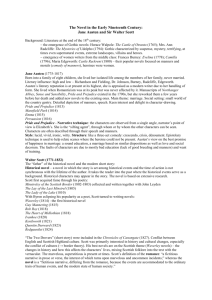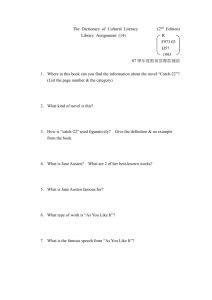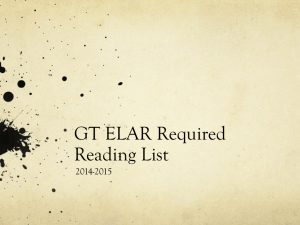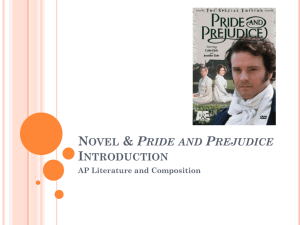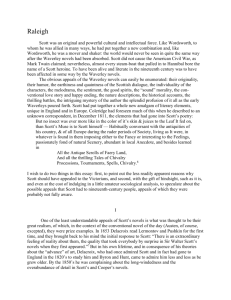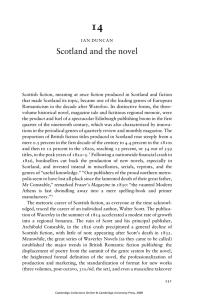The Novel in the Early 19th Century
advertisement
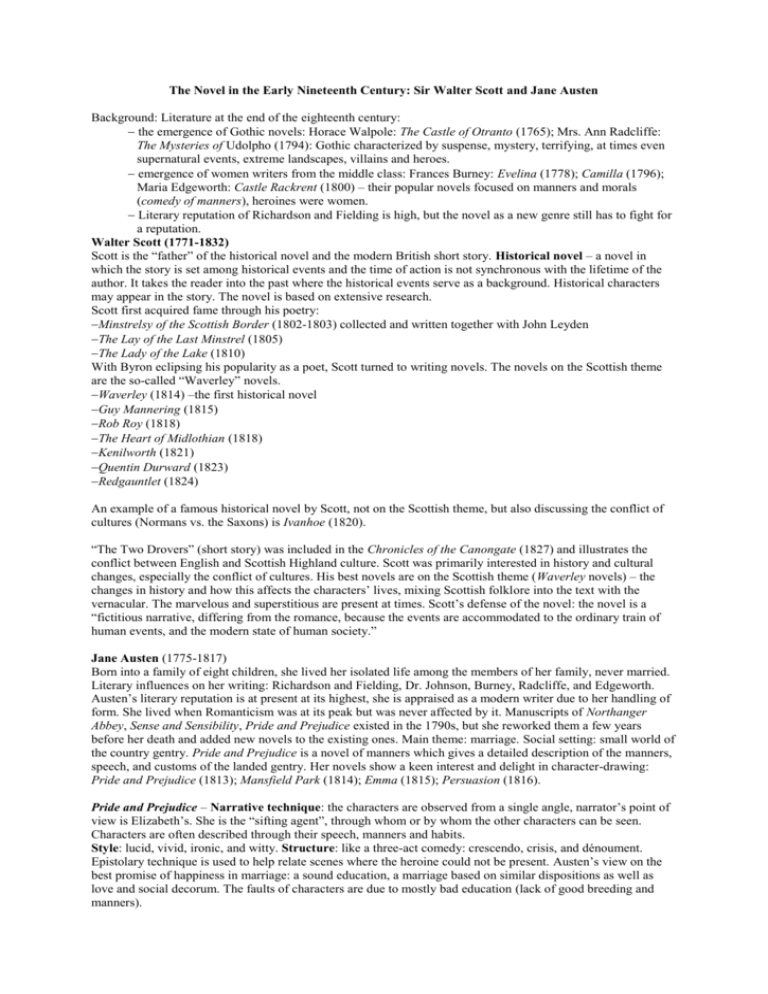
The Novel in the Early Nineteenth Century: Sir Walter Scott and Jane Austen Background: Literature at the end of the eighteenth century: the emergence of Gothic novels: Horace Walpole: The Castle of Otranto (1765); Mrs. Ann Radcliffe: The Mysteries of Udolpho (1794): Gothic characterized by suspense, mystery, terrifying, at times even supernatural events, extreme landscapes, villains and heroes. emergence of women writers from the middle class: Frances Burney: Evelina (1778); Camilla (1796); Maria Edgeworth: Castle Rackrent (1800) – their popular novels focused on manners and morals (comedy of manners), heroines were women. Literary reputation of Richardson and Fielding is high, but the novel as a new genre still has to fight for a reputation. Walter Scott (1771-1832) Scott is the “father” of the historical novel and the modern British short story. Historical novel – a novel in which the story is set among historical events and the time of action is not synchronous with the lifetime of the author. It takes the reader into the past where the historical events serve as a background. Historical characters may appear in the story. The novel is based on extensive research. Scott first acquired fame through his poetry: Minstrelsy of the Scottish Border (1802-1803) collected and written together with John Leyden The Lay of the Last Minstrel (1805) The Lady of the Lake (1810) With Byron eclipsing his popularity as a poet, Scott turned to writing novels. The novels on the Scottish theme are the so-called “Waverley” novels. Waverley (1814) –the first historical novel Guy Mannering (1815) Rob Roy (1818) The Heart of Midlothian (1818) Kenilworth (1821) Quentin Durward (1823) Redgauntlet (1824) An example of a famous historical novel by Scott, not on the Scottish theme, but also discussing the conflict of cultures (Normans vs. the Saxons) is Ivanhoe (1820). “The Two Drovers” (short story) was included in the Chronicles of the Canongate (1827) and illustrates the conflict between English and Scottish Highland culture. Scott was primarily interested in history and cultural changes, especially the conflict of cultures. His best novels are on the Scottish theme (Waverley novels) – the changes in history and how this affects the characters’ lives, mixing Scottish folklore into the text with the vernacular. The marvelous and superstitious are present at times. Scott’s defense of the novel: the novel is a “fictitious narrative, differing from the romance, because the events are accommodated to the ordinary train of human events, and the modern state of human society.” Jane Austen (1775-1817) Born into a family of eight children, she lived her isolated life among the members of her family, never married. Literary influences on her writing: Richardson and Fielding, Dr. Johnson, Burney, Radcliffe, and Edgeworth. Austen’s literary reputation is at present at its highest, she is appraised as a modern writer due to her handling of form. She lived when Romanticism was at its peak but was never affected by it. Manuscripts of Northanger Abbey, Sense and Sensibility, Pride and Prejudice existed in the 1790s, but she reworked them a few years before her death and added new novels to the existing ones. Main theme: marriage. Social setting: small world of the country gentry. Pride and Prejudice is a novel of manners which gives a detailed description of the manners, speech, and customs of the landed gentry. Her novels show a keen interest and delight in character-drawing: Pride and Prejudice (1813); Mansfield Park (1814); Emma (1815); Persuasion (1816). Pride and Prejudice – Narrative technique: the characters are observed from a single angle, narrator’s point of view is Elizabeth’s. She is the “sifting agent”, through whom or by whom the other characters can be seen. Characters are often described through their speech, manners and habits. Style: lucid, vivid, ironic, and witty. Structure: like a three-act comedy: crescendo, crisis, and dénoument. Epistolary technique is used to help relate scenes where the heroine could not be present. Austen’s view on the best promise of happiness in marriage: a sound education, a marriage based on similar dispositions as well as love and social decorum. The faults of characters are due to mostly bad education (lack of good breeding and manners).
